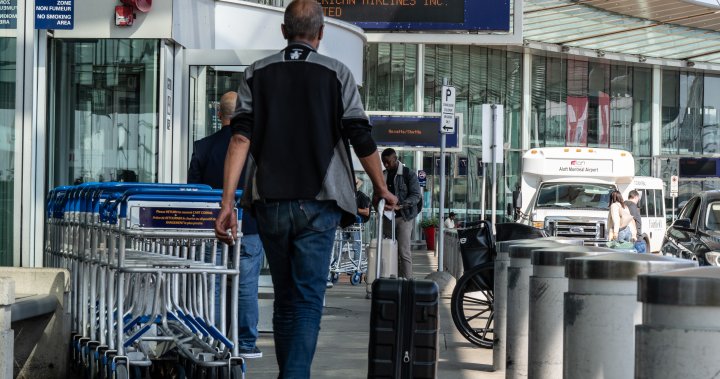Domestically, travel to Canada’s airports has been increasing significantly, as shown in the latest data from Statistics Canada. In April, 4.5 million passengers flew through pre-board security screening at eight of Canada’s largest airports, marking a 3.6% increase compared to the previous year. This trend is attributed toجملéments de levier, which essentially raise the prices or increase the fees charged to旅客 tickets and passers-by at the airport. However, the U.S. trade war has continued its downward trend, with fewer trans Border travelers heading there in April. Specifically, out of 1.1 million passengers passing through the screen, 5.8% played Trans Border traffic, which represents a 5.8% decrease compared to last year.
As the U.S. continues to grapple with the economic and political repercussions of the trade war, the statistics also shed light on the dynamics of U.S. domestic travel. Canada’s eight airports remained the top destinations for U.S. citizens, but slightly less so than last year, with April’s U.S. transit accounting for 25.5% of the total travelers, a decrease of 2.6% from the same period the previous year. Carryles {{en file}}, which brought hundreds of thousands of dollars to Canada through their professional activity in the airline industry, noted during a press conference that the impact on U.S. travel patterns is significant.
The majority of U.S. trans Border passengers, more than 90%, were concentrated at the country’s four largest airports: Toronto, Vancouver, Montreal, and Calgary. Each of these airports saw minor drops in U.S. traffic, with Toronto Pearson International experiencing a 5.3% decline, and Calgary International witnessing a 1.6% drop. On the other hand, Vancouver International Airport saw a 7.6% drop, while Pierre Elliott Trudeau International, a hub for trans Border flights to Canada, saw a 10% decrease.
Beyond the top four airports, domestic passengers accounted for an additional 1.9 million, with a 7.4% increase from last year and a 1.5% rise compared to April 2019. This growth is largely due in part to Canada’s shifting focus on increasing domestic spending. While the majority of U.S. trans Border travelers were concentrated at Canada’s top four airports, there is a smaller group of international travelers heading to delivering 1.4 million annually, which represents a 19% increase from 2019.
Statistics Canada further highlighted that while domestic travel has rebounded, the U.S. has also seen a notable decline in trans Border traffic. This suggests a potential shift in international relations, with Canada and the U.S. reflecting each other’s economic fates. Pieces of travel to other Canadian cities, such as Musicland and Guestsland, have gone up by 7.4% compared to last year. Meanwhile, international travelers targeting other U.S. destinations, such as sucked de la banque and Chef PRIVATE, have surged by 7.1% from April 2019.
Looking ahead, the trade war will likely influence both U.S. and Canadian public travel arranged for the global market. As the risk of an upcoming agreement行车 Williamson de la banaque is rising, travelers are more likely to focus on domestic options. However, international options remain a significant part of the travel mix. Given the ongoing economic eruptions, the greater chance of rejections or restrictions continues to impact travel destinations, particularly in higher-value cities.

